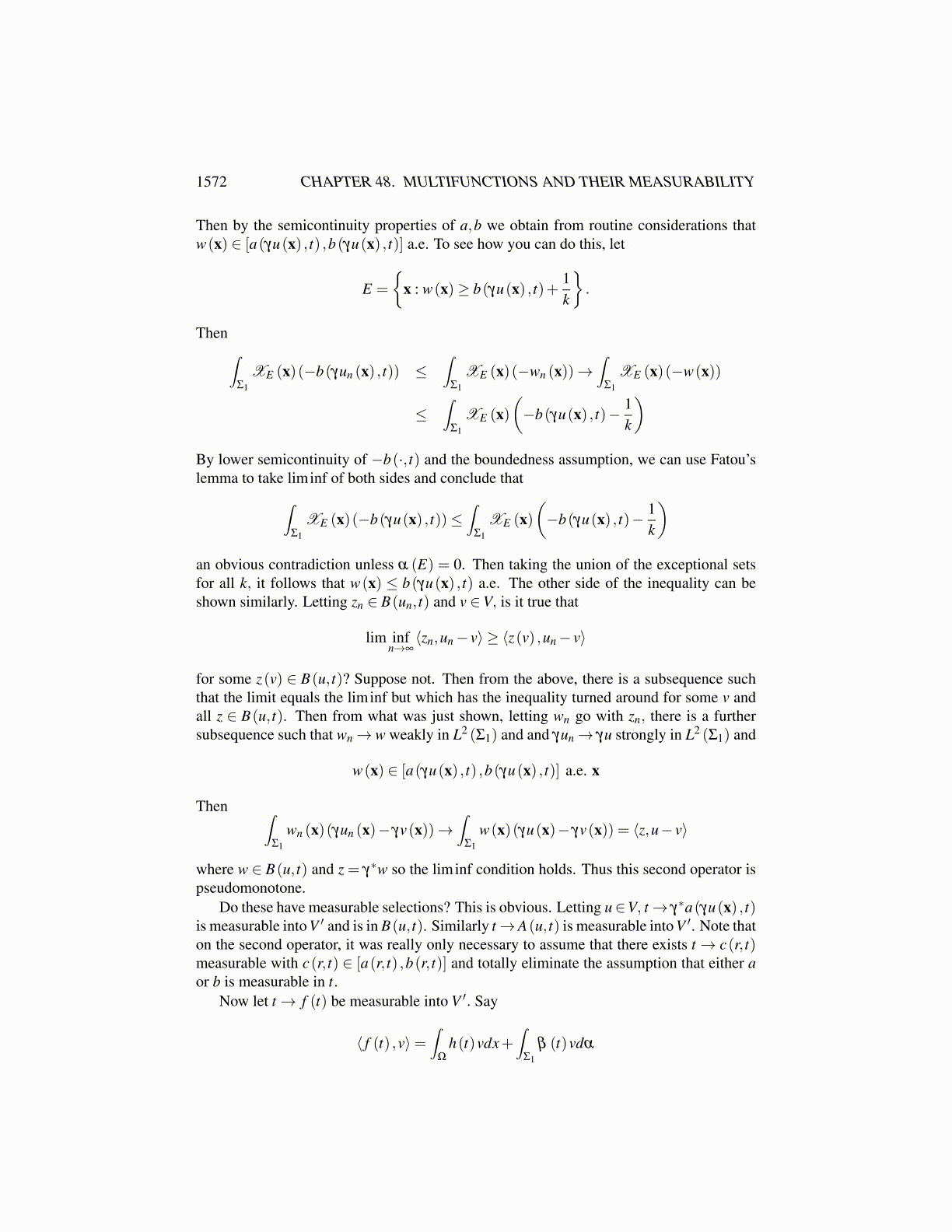
1572 CHAPTER 48. MULTIFUNCTIONS AND THEIR MEASURABILITY
48.6 An ExampleLet σ (r, t) be a continuous function of r which satisfies
r → σ (r, t) is continuous, t→ σ (r, t) is measurable,0 < δ (t)≤ σ (r, t)≤ 1/δ (t)
There is no uniform lower bound needed for δ (t). Then we will let V be a closed subspaceof H1 (Ω) where Ω is a bounded open set with Lipschitz boundary.
V ≡{
u ∈ H1 (ω) : γu = 0 on Σ0}
where α (Σ0) > 0 for α the surface measure, Σ0 a closed subset of ∂Ω and γ is the tracemap. Thus an equivalent norm for V is
∥u∥2V =
∫Ω
|∇u|2 dx
Also let H = L2 (Ω) and let H = H ′ so that V ⊆H = H ′ ⊆V ′. Then let A(·, t) : V →V ′ bedefined by
⟨A(u, t) ,v⟩ ≡∫
Ω
σ (u, t)∇u ·∇v
Is this a bounded pseudomonotone map? It is clearly bounded thanks to the bounds on σ .Suppose then that un→ u weakly in V and
lim supn→∞
⟨A(un, t) ,un−u⟩ ≤ 0
Does the liminf condition hold? If not, then there exists a subsequence and v ∈V such that
limn→∞⟨A(un, t) ,un− v⟩< ⟨A(u, t) ,u− v⟩
By compactness, there is a further subsequence still denoted with n such that un → ustrongly in L2 (Ω) and pointwise. Consider∫
Ω
σ (un, t)∇un · (∇un−∇v)
Now by the dominated convergence theorem,∫Ω
|σ (un, t)−σ (u, t)|2→ 0
and so in fact σ (un, t)∇un→ σ (u, t)∇u weakly in H3. Then∫Ω
σ (un, t)∇un · (∇un−∇v) =∫
Ω
σ (un, t)∇un · (∇un−∇u)
+∫
Ω
σ (un, t)∇un · (∇u−∇v)